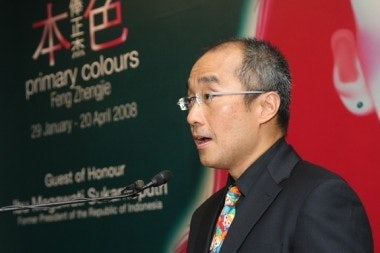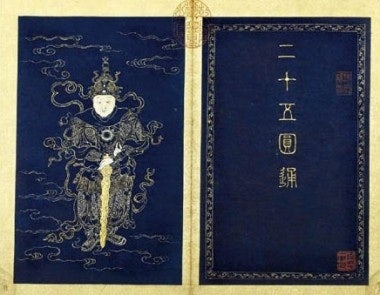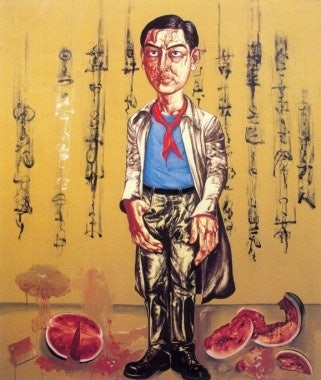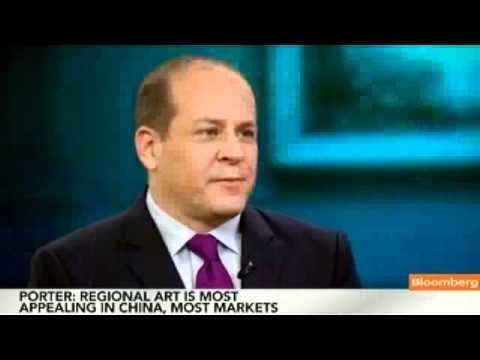Asian Art Collectors Building More Private Art Museums, Particularly In China#
A roundup of this weekend's art news, from Asian collectors building more private museums to house their collections to record prices for Chinese antiquities at Sotheby's in Paris:
Asian Collectors Showcase Works (New York Times)#

Budi Tek
Jing Daily has previously looked at the growing role played by private collectors in the development of China's domestic museum industry, from Wang Wei and Liu Yiqian's upcoming Dragon Art Museum to Indonesian-Chinese collector Budi Tek's De Museum, expected to open in Shanghai in 2013. This week, the New York Times gives us another glimpse at the construction of private museums by private Asian collectors, noting that, “In Asia, the private sector plays a very important role in supporting contemporary art, because governments are not really that interested.” From the article:
Karen Smith, a Beijing-based art critic and curator, notes that in China, few collectors have yet acquired enough quality works to open an interesting private museum. “Added to the fact that taking things to the next level requires really deep pockets, in the present climate most will be weighing up the issue of money spent on funding a museum versus the money that could be spent on art,” she said.
Nonetheless, several Chinese collectors appear ready to make the leap. The Shanghai-based business tycoon and collector Liu Yiqian and the Beijing-based collector Guan Yi are both said to be considering opening their own museums to display their collections.
A big problem facing those private museums in China that do see the light of day is sustainability. The Shanghe Art Museum in Chengdu and Dongyu Art Museum in Shenyang both closed down in the early 2000s after being open only a few years, reportedly due to a lack of sustainable funding.
Funding is not the only impediment to a successful private museum, Ms. Smith says. “It’s about programming, staffing, fixing a focus of activities, and developing and sustaining a meaningful public profile for the museum.”
But this does not deter Mr. Tek as he prepares to open his second museum. He already has a full-time curator for his Jakarta museum and plans to hire another one for the De Museum when it opens in two years. Situated in Shanghai’s Jiading District, the entire project will occupy about four hectares, or 10 acres; with about 8,000 square meters, or 85,000 square feet, of exhibition space available.
Qianlong Pieces Power Sotheby’s Paris Sale Of Asian Art (Art Media Agency)#

Chinese buyers are spellbound by art and artifacts from the reign of emperor Qianlong (Image: Sotheby's)
The allure of antiques from the time of the Qing Dynasty emperor Qianlong (previously on Jing Daily) continues to power the Chinese antiquities market, according to Sotheby's. This after last week's Asian Art sale in Paris, at which a number of lots sold for 10 times their pre-sale estimates. As the Art Media Agency notes this week, the sale saw several works break previous sales records, including a pair of 19th century display cabinets, which sold for US$1.85 million. An impressive price in itself, but particularly impressive because these cabinets had a pre-sale estimate of only $14,000-22,000. The highest-priced item, a sculpted jade vase from the heyday of the Qing Dynasty (1644-1912), sold for US$2.8 million, well over its pre-sale estimate of $215,000-287,000. Interestingly enough, the vase had originally been purchased by an American collector in 1941 for only $400, or $6,000 today.
Other lots from the Sotheby's sale in paris, as highlighted by the Art Media Agency:
A Famille Rose rare china bottle vase depicting a Buddhist scene, Qing Dynasty, Qialong era, estimated at €5,000 to €70,000 and sold for €780,750 (US$1.1 million);
A Guanyin white jade sculpted statuette, Qing Dynasty, Qianlong era, estimated at €30,000 to €40,000 and sold for €504,750 ($725,000);
A large Mogul sculpted vase made of white jade, Qing Dynasty, estimated at €40,000 to €60,000 € and sold for €468,500 ($673,000);
A small group of rust colour sculpted statuettes made of white jade, Qing Dynasty, Qianlong era, estimated €20,000 to 30,000 and sold for €248,750 ($357,000).
As has often been the case recently, the most expensive lots rarely sold for more than their pre-auction estimates. For instance, a Qianlong blue china flask valued at €600,000 to €800,000, sold for €660,750 ($949,000).
The last point is perhaps the most interesting, in terms of the buying habits of Chinese collectors. They're constantly searching for under-priced items, which they then bid up to stratospheric highs. A Qianlong-era artifact with a pre-sale estimate of, say, $10,000 is far more attractive to them then another set at $600,000. This reflects the "thrill of the chase" that we see among new Chinese collectors, and is a trend definitely worth watching at upcoming auctions.
Porter Of Christie's Says Chinese Contemporary Art Gaining Popularity (Youtube)#

Hong Kong is now one of the world's top markets for Chinese art, antiques, and jewelry, rivaling New York and London
This weekend, Marc Porter, president of Christie's Americas, spoke with Bloomberg Television about the state of the art auction market. According to Porter, the half-billion-dollar spring auctions that recently concluded in Hong Kong reflected the appetite for segments like "jewelry, Chinese contemporary art, [and] porcelain" among collectors from the Greater China region. While Porter notes that Chinese collectors are still primarily driven by regional buying, he suggests that buyers from Taiwan, Hong Kong and mainland China are increasingly interested in Western art segments as well. (Though they will continue to dominate the Chinese contemporary art field for the foreseeable future.)
Fielding the question of whether the thinks the rapidly increasing prices we're seeing for Chinese contemporary art have the segment entering bubble territory, Porter points out that the prices we're seeing for Chinese contemporary art are only now reaching the levels set by American and European contemporary artists in the post-war era, and as such the "second boom" in Chinese contemporary art reflects something of a game of "catch-up" and "an appreciation of the works of art that were produced in China, rather than a bubble environment."
